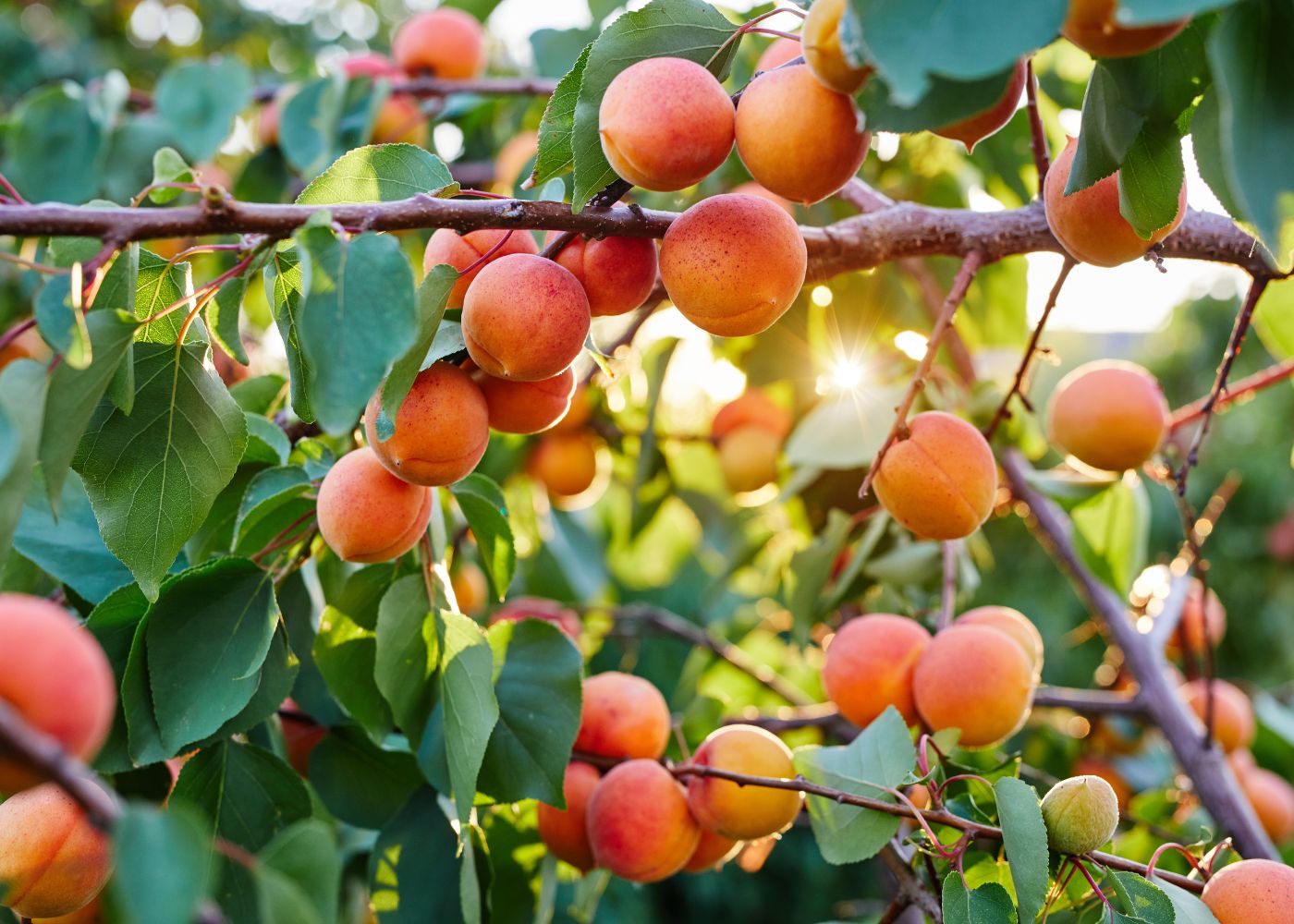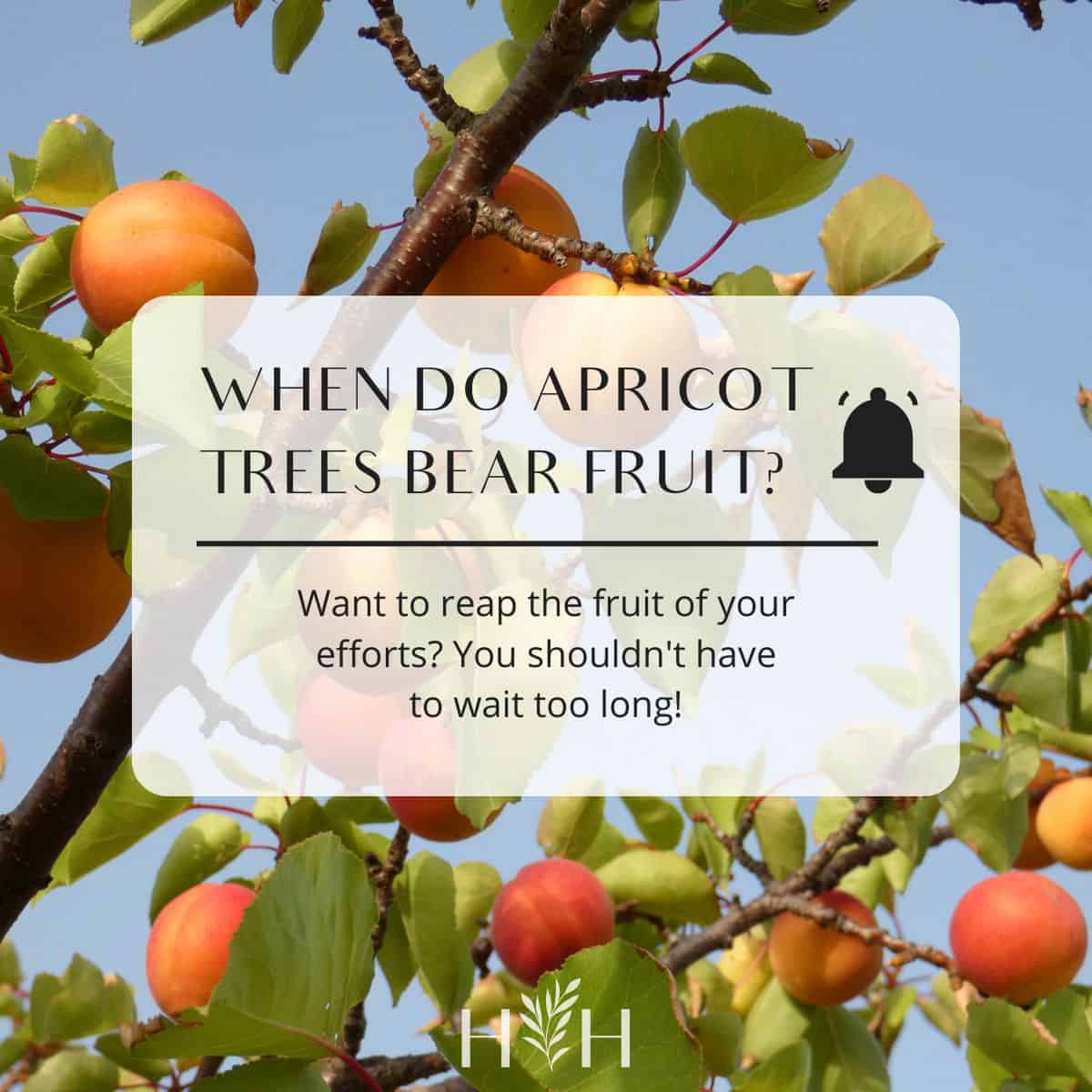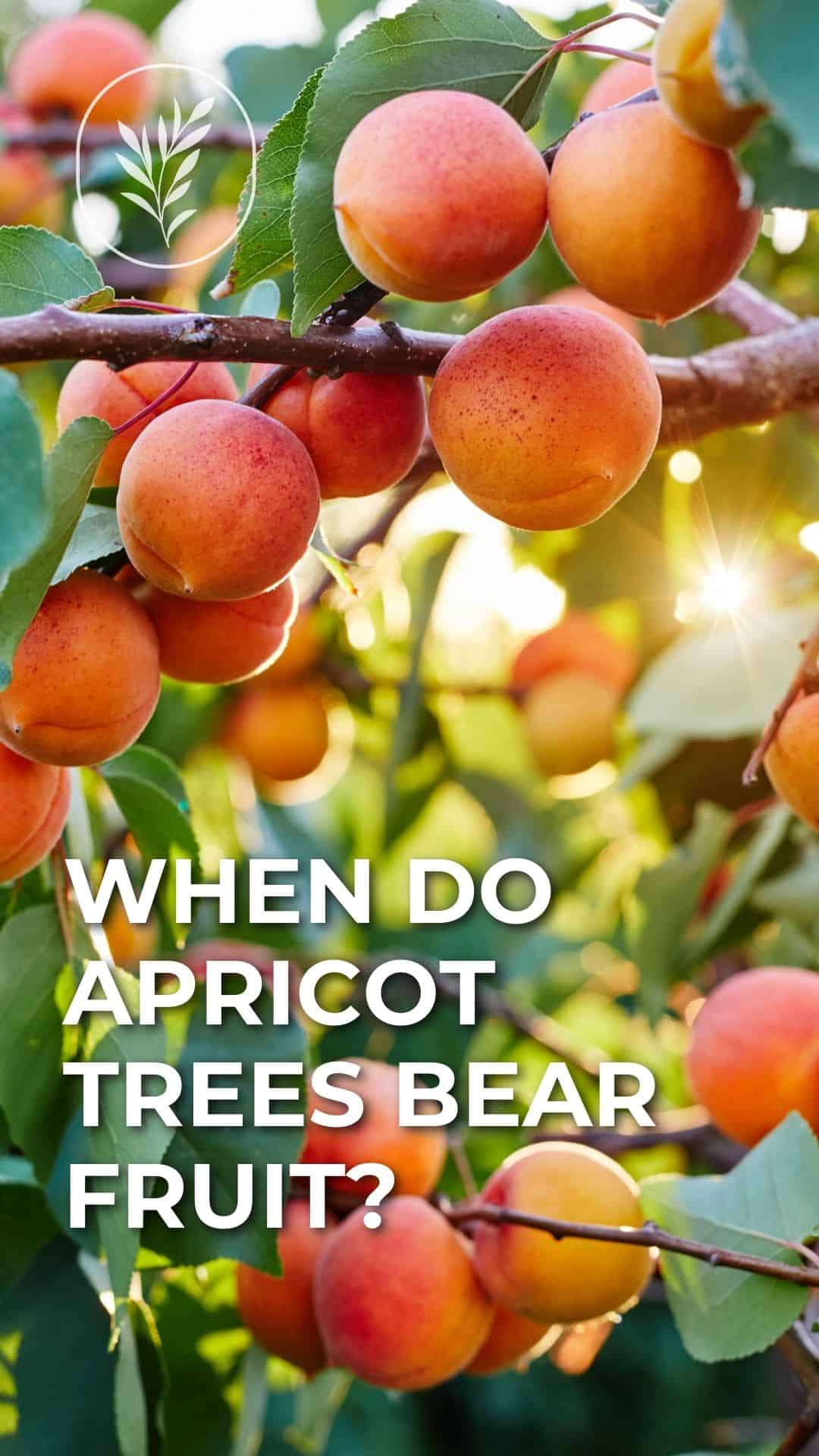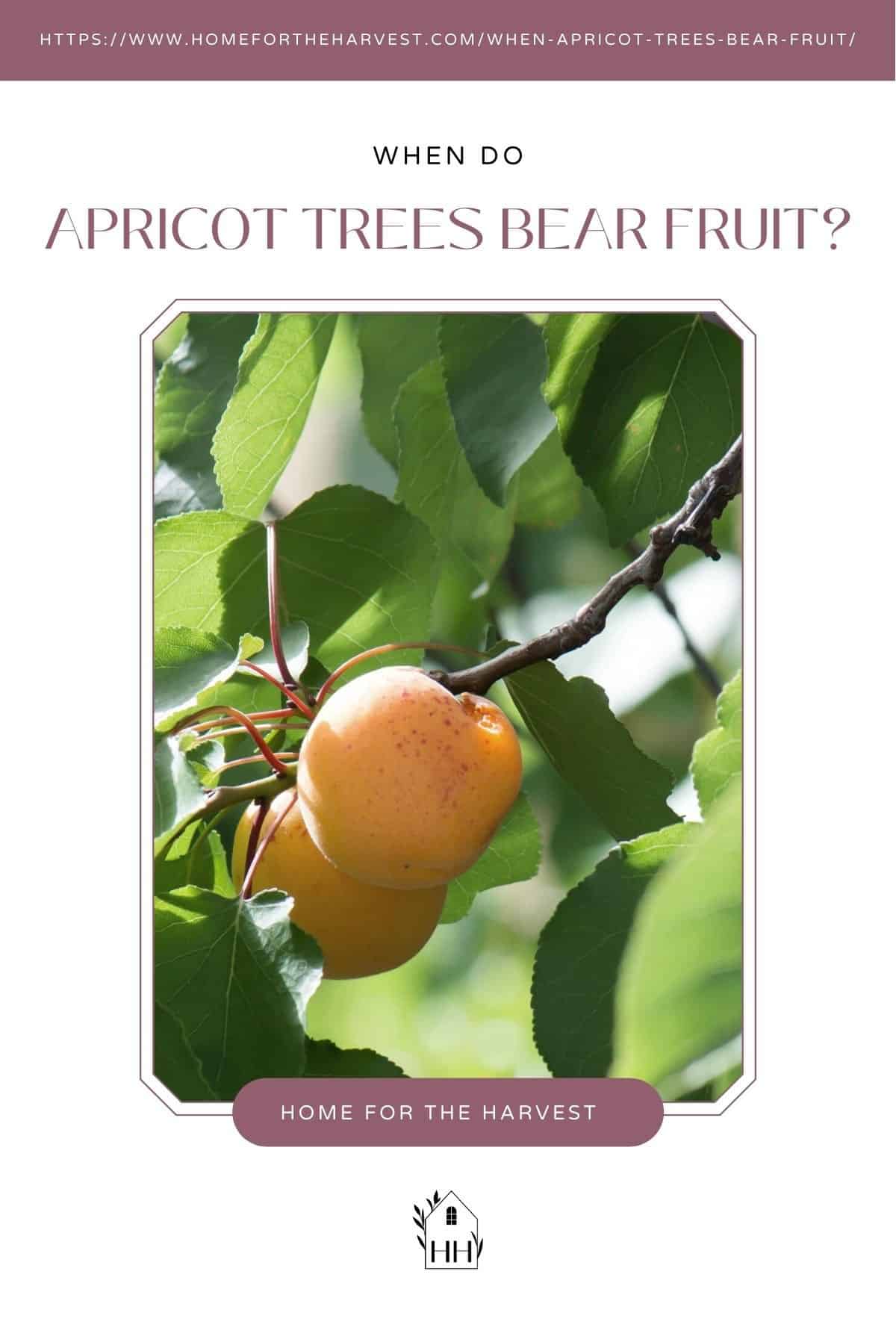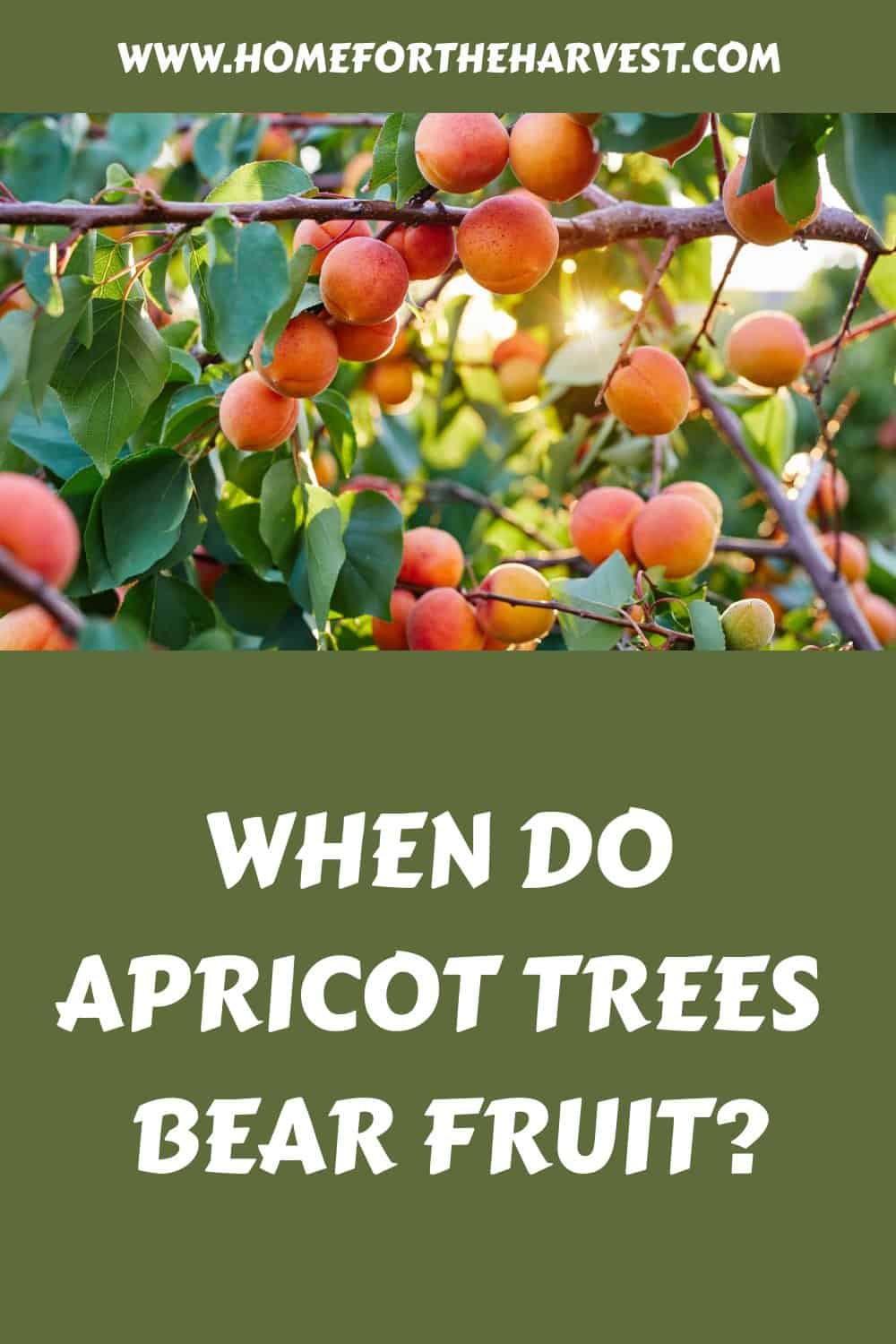Apricot trees typically start to bear fruit when they are 4-5 years old. Most trees are grafted and are already 1-2 years old when sold. It usually takes an additional 2-3 years after planting for the tree to start blossoming in the spring (and even then, there are usually only a few blossoms that have the potential to turn into fruit). Proper apricot harvests tend to start 4-5 years after planting the trees in their final location.
Apricot tree fruiting timeline
Apricot trees tend to bear their first few fruits 2-3 years after they are planted in their permanent spot. It takes more like 4-5 years for a proper harvest to set on the tree.
Apricot trees blossom in early spring. The number of years it takes for this to start is dependant upon how the tree was created in the nursery and on its growing conditions.
Named varieties of apricots such as ‘Harlayne’, ‘Alfred’, ‘Blenheim’, and ‘Moorpark’ are typically grafted onto rootstocks in the nursery. Grafted trees tend to bear fruit a couple years earlier than the tree would have beared if the preferred variety hadn’t been grafted onto the root.
Conditions for quick growth
Apricot trees grow most vigorously when they are planted in well drained soil and the leaves receive a minimum of 6-8 hours of direct sunlight daily. They also thrive with good air circulation and proper soil nutrition.
Apricots can be grown in Zones 5-9. They prefer low air humidity and don’t like “wet feet”. The trees will start bearing earliest when winters have enough chilling hours, spring temperatures are warm, and humidity is low. Less-than-ideal climates often have issues with pests and disease, which can affect the harvest.
In Zones 8-9, it makes sense to consider planting “low-chill” varieties, as these trees don’t need as many hours of cold weather to bear fruit. Some popular low-chill apricot varieties are Katy, Early Golden, Autumn Glo, Castlebright, Early Autumn, Flavor Giant, Flora Gold, Royal Rosa, and Nugget.
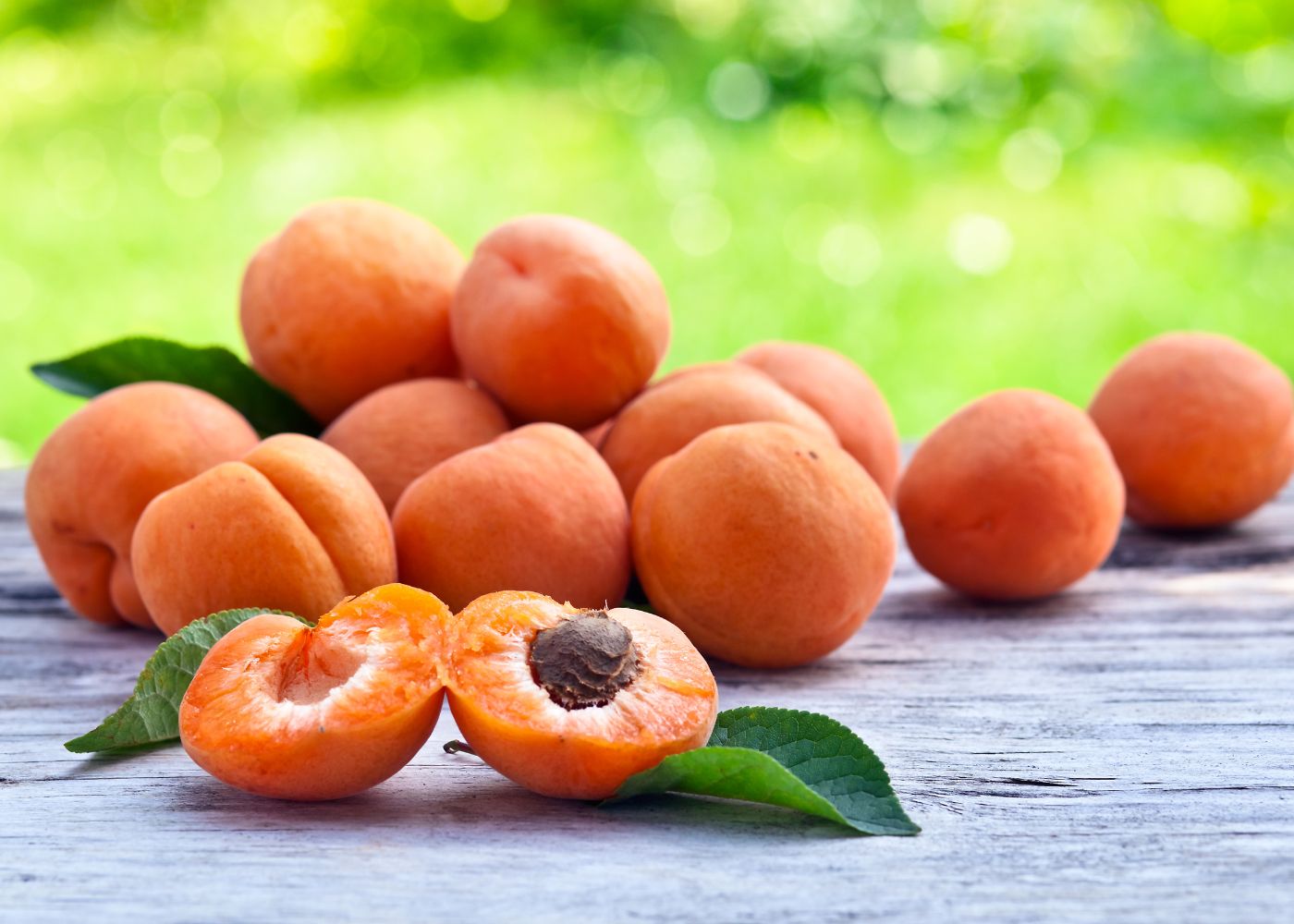
Pruning young apricot trees for good future harvests
Apricot trees are generally pruned quite soon after they are planted (see planting tips here). This initial pruning and training sets the main scaffold limbs up for future harvests.
Apricot fruits don’t grow on the main scaffold limbs. Some grow on one-year-old stems, while most of them set laterally on 2-3 year old spurs.
The first few years after planting are mainly about getting the main scaffold limbs in place so that the harvest is maximized (and disease minimized) for the rest of the fruiting life of the tree. While apricot trees are pruned every year, the most important pruning happens during the first 3 years. Some growers will even remove any blossoms that appear in year 2 or 3 after planting so that the tree can focus its energy on root and stem growth.
The most popular type of apricot pruning method is called open center. Some orchardists are also now growing apricots in high density perpendicular “V” configurations.
Apricots on self-supporting rootstocks can stand all on their own, but certain types of rootstocks are not as strong and the trees may require training wires and/or stakes.
Eutypa lata, a fungus that causes Eutypa dieback, often infects pruning wounds. For this reason, prune late in the spring, summer, or in early fall to avoid shoulder season rains that could spread the disease. You may do some minor pruning also during summer for better light penetration.
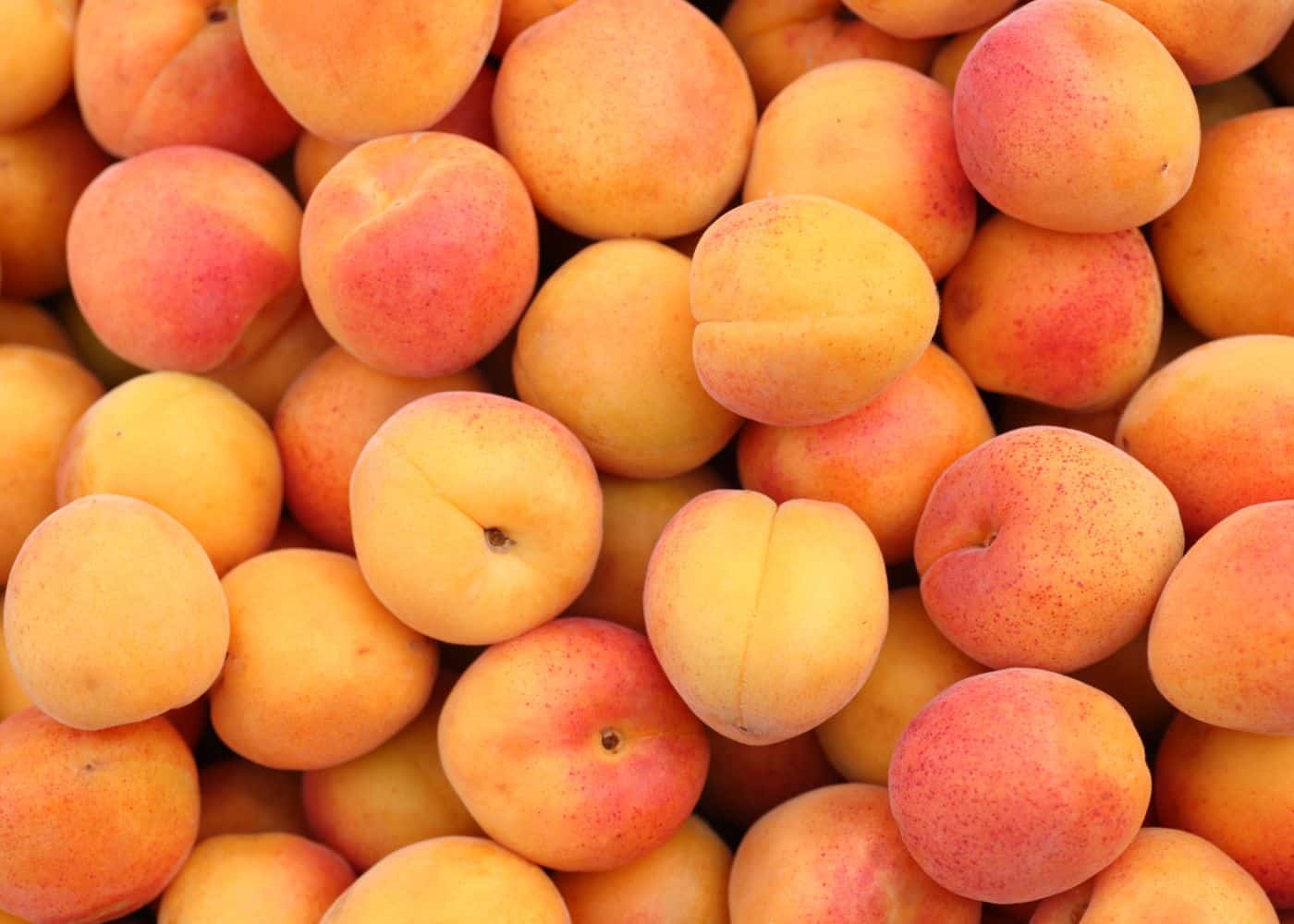
Pruning established apricot trees for fruit production
Once the main scaffold limbs are established, fruit production becomes the focus of annual pruning. Each year, apricot growers will remove any weak or non-productive stems. They’ll also thin out the remaining lateral branches so that there is good airflow and so each fruit has room to grow. Every year, apricots must be pruned for several reasons: to produce a consistent yield, have larger fruits, keep common apricot diseases at bay, and keep yield volumes consistent from year to year.
Start by removing any dead or diseased wood. Cut back any crossed or rubbing branches. You can also remove any suckers that are growing from the base of the tree.
Next, thin out the lateral branches so that there is about 6-8 inches (15-20 cm) of space between each one. This will ensure good airflow and prevent the spread of diseases. It will also allow the fruits to grow larger.
Remember to sterilize your pruning tools to prevent the spread of diseases. You can do this by dipping them in a jar of Lysol cleaner.
“Because apricots bear fruit on wood from one to three years old, prune a bearing tree enough to stimulate a moderate amount of new growth each year.”
Landscaping with Fruit, by Lee Reich
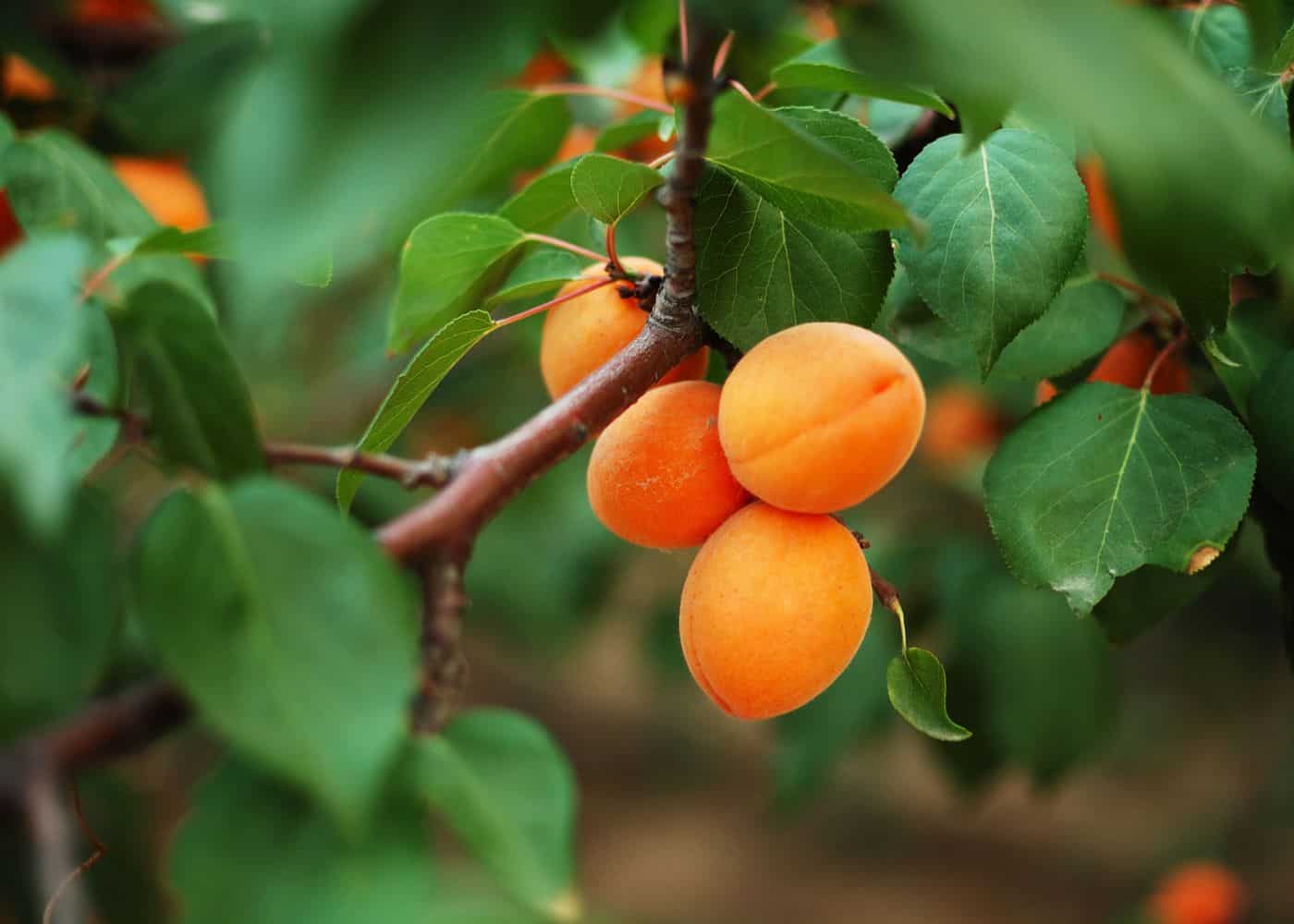
Harvesting fruit from apricot trees
Apricots are generally ripe and ready to harvest when they easily come off the tree with a gentle twist. Hold the fruit in one hand and twist it gently to break it off the stem. Be careful not to pull or yank on the fruit, as this can damage the branch. The fruit should also be fragrant and have a uniform, deep color.
If you’re unsure whether the apricots are ready to harvest, taste one! Ripe apricots will be sweet and have a soft texture. While commercial growers pick them when it is firm, but tree-ripened fruits tend to taste much better. This is likely one of the reasons why homegrown apricots tend to be much richer and sweeter than dry store-bought apricots.
Mature apricot trees can produce 100-200 pounds per tree each year. However, yield will vary depending on the age and health of the tree, as well as the pruning practices.


